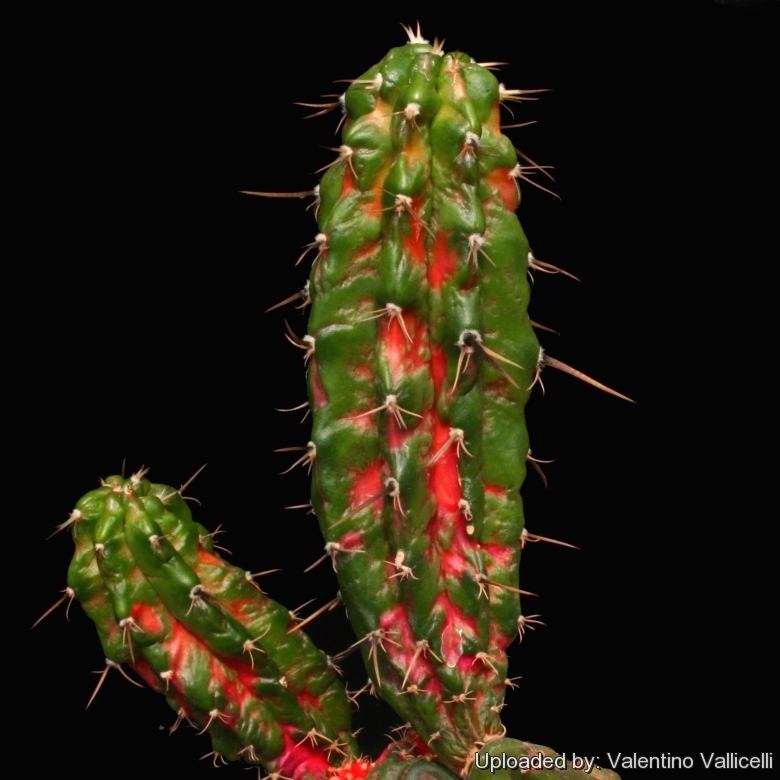
+ Myrtillocalycium cv. Polyp Photo by: Valentino Vallicelli
Synonyms:
Description: Myrtillocalycium 'Polyp' is a graft chimera (bigeneric cactus chimaera) between Myrtillocactus cochalSN|7812]]SN|7812]] and Gymnocalycium cv. Red Hibotan, it is a very colourful red and green columnar cactus This plant is quite unstable and have a tendency to revert to common red Gymnocalycium shoots.
Notes: Chimeras in the the Cactaceae family: Chimaeras of plants belonging to the Cactaceae family are very rare and quite unusual in cultivation. The first chimera + Hylocalycium (Hylocereus undatus + Gymnocalycium mihanovichiiSN|11929]]SN|11929]] forma rubra “cv. Red Hibotan”), was described in cactus & succ .J. of America 1987 61- 4 2,
Recently some other chimerical cactus have been signalled in internet for example:
+ Myrtillocalycium (Myrtillocactus geometrizansSN|8050]]SN|8050]] + Gymonocalycium cv. Red Hibotan )
+ Myrtillocalycium (Myrtillocactus cochalSN|7812]]SN|7812]] + Gymonocalycium cv. Red Hibotan )
Gymnocalycium mihanovichiiSN|11929]]SN|11929]] v. fleischerianum + Echinopsis tubiflora.
Gymnocalycium mihanovichiiSN|11929]]SN|11929]] v. fleischerianum + Hylocereus guatamalensis
Ariocarpus retususSN|2079]]SN|2079]] + Echinopsis eyriesiiSN|8004]]SN|8004]]
Chimeras-graft appear more frequently among Ariocarpus than among any other genus on stock of either Echinopsis sp. or Myrtillocactus geometrizansSN|8050]]SN|8050]].)
In some ornamental plants chimaeras may be the result of lengthwise implanting and sophisticated techniques, a possible methods include cutting the stem at the midpoint and combining the lobes of stock and scion. It is supposed that the miscellaneous tissues in the joint point can accrete and give life to an adventitious new plant "chimera". But - as we know - nobody till now has succeeded to make cacti chimera on purpose. Circumstances which cause the chimera to appear include huge numbers of grafts.
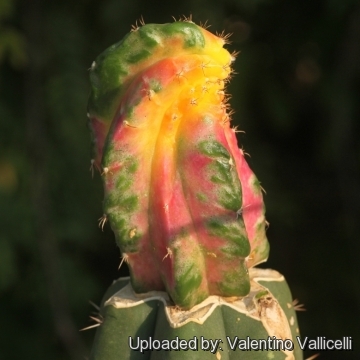 + Myrtillocalycium cv. Polyp Photo by: Valentino Vallicelli
+ Myrtillocalycium cv. Polyp Photo by: Valentino Vallicelli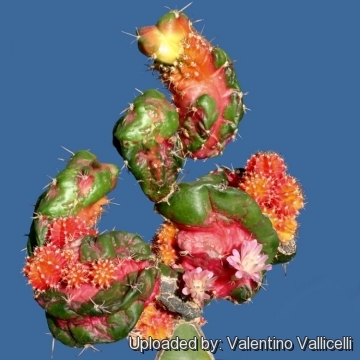 + Myrtillocalycium cv. Polyp Photo by: Valentino Vallicelli
+ Myrtillocalycium cv. Polyp Photo by: Valentino Vallicelli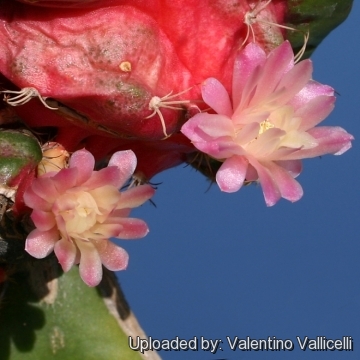 + Myrtillocalycium cv. Polyp Photo by: Valentino Vallicelli
+ Myrtillocalycium cv. Polyp Photo by: Valentino Vallicelli + Myrtillocalycium cv. Polyp Photo by: Valentino Vallicelli
+ Myrtillocalycium cv. Polyp Photo by: Valentino Vallicelli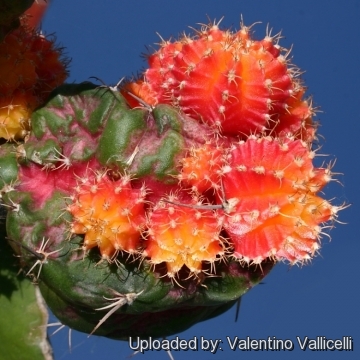 + Myrtillocalycium cv. Polyp Photo by: Valentino Vallicelli
+ Myrtillocalycium cv. Polyp Photo by: Valentino Vallicelli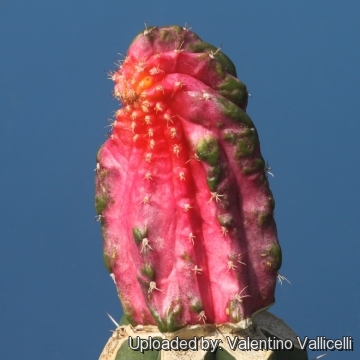 + Myrtillocalycium cv. Polyp Photo by: Valentino Vallicelli
+ Myrtillocalycium cv. Polyp Photo by: Valentino Vallicelli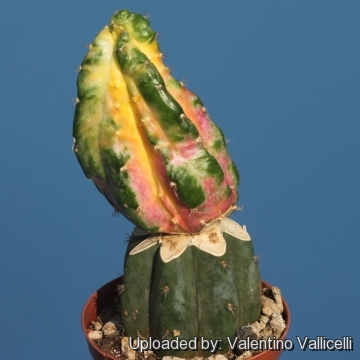 + Myrtillocalycium cv. Polyp Photo by: Valentino Vallicelli
+ Myrtillocalycium cv. Polyp Photo by: Valentino VallicelliSend a photo of this plant.The gallery now contains thousands of pictures, however it is possible to do even more. We are, of course, seeking photos of species not yet shown in the gallery but not only that, we are also looking for better pictures than those already present.
Read More... Cultivation and Propagation: They are semi hardy, make sure that your Myrtillocalycium are not exposed to temperatures below -4°C or they may die, nevertheless it is a good advice never let the nighttimes temperatures fall below 10°C. Water regularly in summer but allow to dry fully before watering again. Need a well-drained soil mix with small gravel added to ensure drainage. During the winter months they should be rather kept dry and water is restricted to only enough to keep the stems and branches from shrivelling. Repotting should be done every other year or when the plant has outgrown its pot.
Exposure: Light shade.
Propagation: Cuttings in summer (Cuttings will root only in hot weather. Cuttings must be kept very dry to root) or grafting.
Your Photos
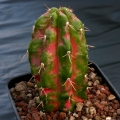
by Valentino Vallicelli


















